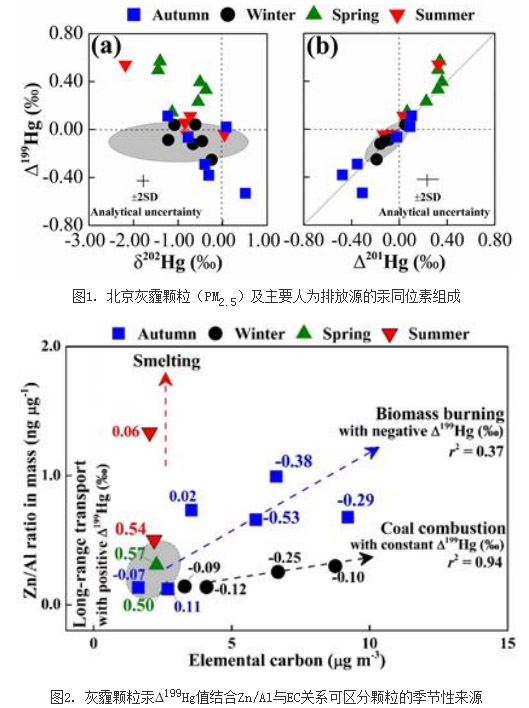Advances in research on isotopic tracer ash particle mercury in geochemistry
Ash particle pollution will cause great harm to the regional environment and human health. The prevention and control of ashes has become an urgent task in some parts of China (such as Beijing), and accurate source analysis is the fundamental and key to establishing effective pollution prevention and control measures. Since ash (aerosol) particles are an important carrier of atmospheric mercury, the rapid development of mercury isotope methods in recent years may open up new horizons for tracing the origin of ash particles. In view of this, the research group of the Institute of Geochemistry of the Chinese Academy of Sciences researcher Chen Yubin started to establish a high-precision mercury isotope test method for ash particles in 2013, which led to a systematic study of the pollution source and geochemical behavior of urban atmospheric particulate mercury.
Recently, under the joint funding of the National Key Basic Research and Development Program, the Pilot Project of the Chinese Academy of Sciences and the Innovative Cross-Team Project, the research team systematically studied the mercury isotopes of mercury in China, combining other geochemical parameters (for example, PM2.5, Based on the elemental carbon and trace metal element concentrations) and meteorological data, the source of mercury in ash was initially traced. The results show that the composition of mercury isotopes in Beijing ash particles has obvious seasonal changes (Figure 1), and the source of the emissions in different seasons may be the main cause of mercury isotope changes: 1) Industrial emissions (such as smelting, cement production And coal combustion) is a major contributor to mercury and is ubiquitous in the four seasons; 2) significant contributions to coal emissions and biomass combustion in winter and autumn, respectively; 3) relatively high levels found in particles in spring and summer Positive non-mass fractionation of odd-numbered mercury isotopes indicates that long-distance transport of mercury, other than local sources, may also be an important source of mercury in the ash (Figure 2). This study not only lays the foundation for the in-depth study of source and migration of particulate mercury using isotopes, but also indicates that metal (non-traditional) stable isotopes (such as Hg, Zn, Cd, etc.) are used to trace atmospheric particles of heavy metals and their carrier ash particles. Sources, as well as the process of migration and transformation, have important application value. At the same time, the accumulation factor of abnormally high metals (such as mercury) in ash particles also indicates that it is imminent to study the heavy metals and corresponding health hazards in ash particles.
Relevant research results were published in the Atmospheric Chemistry and Physics, an atmospheric authoritative journal, and the Journal of Analytical Atomic Spectrometry.

DQOK Bathroom Basin Faucets With Simple And Unique Design, DQOK Basin Faucet Created According To People's Living Habits, Create High Cost Performance Contemporary /Classical High-quality Sink Brass/304 Stainless Steel Faucets Makes You Creat A Wonderful And Conformtable Bathroom. DQOK Bathroom Basin Faucets Have CUPC, NSF/ANSI 61, Low-Lead,SASO,KC and CE certificates.
Basin Faucet,Wall Mounted Taps,Wash Basin Faucet,Kitchen Basin Tap
Heshan Dingquan Sanitary Ware Industry Co., Ltd , https://www.dqoksanitary.com